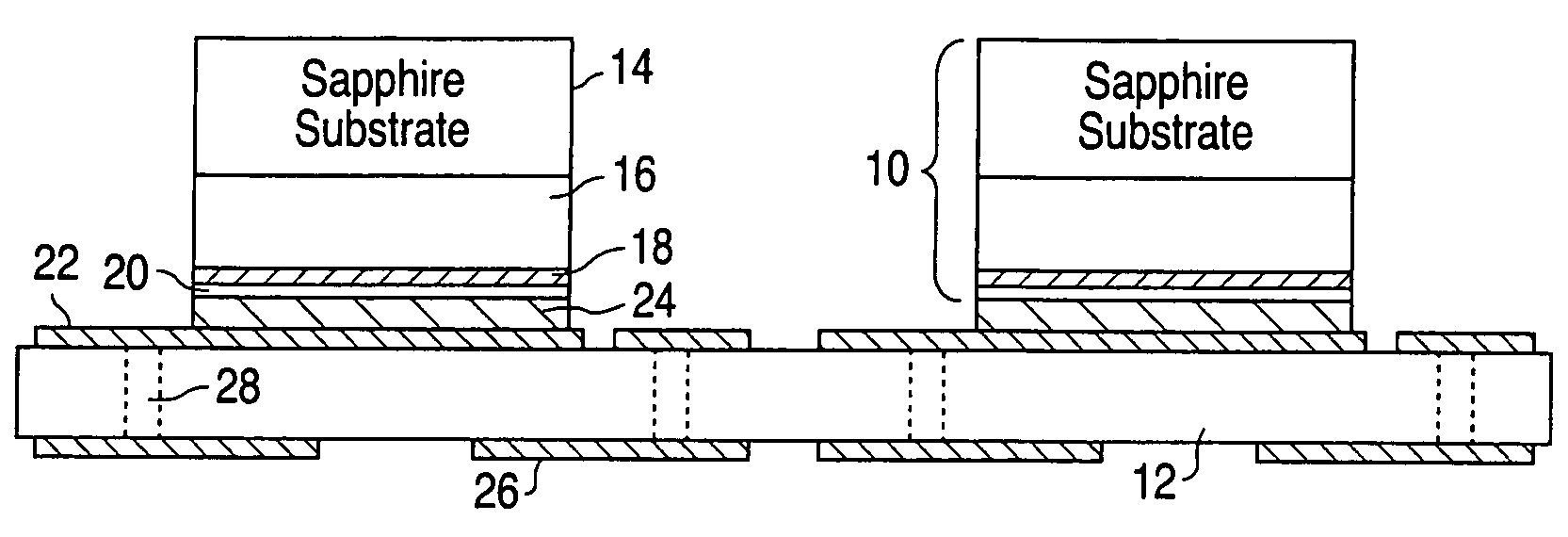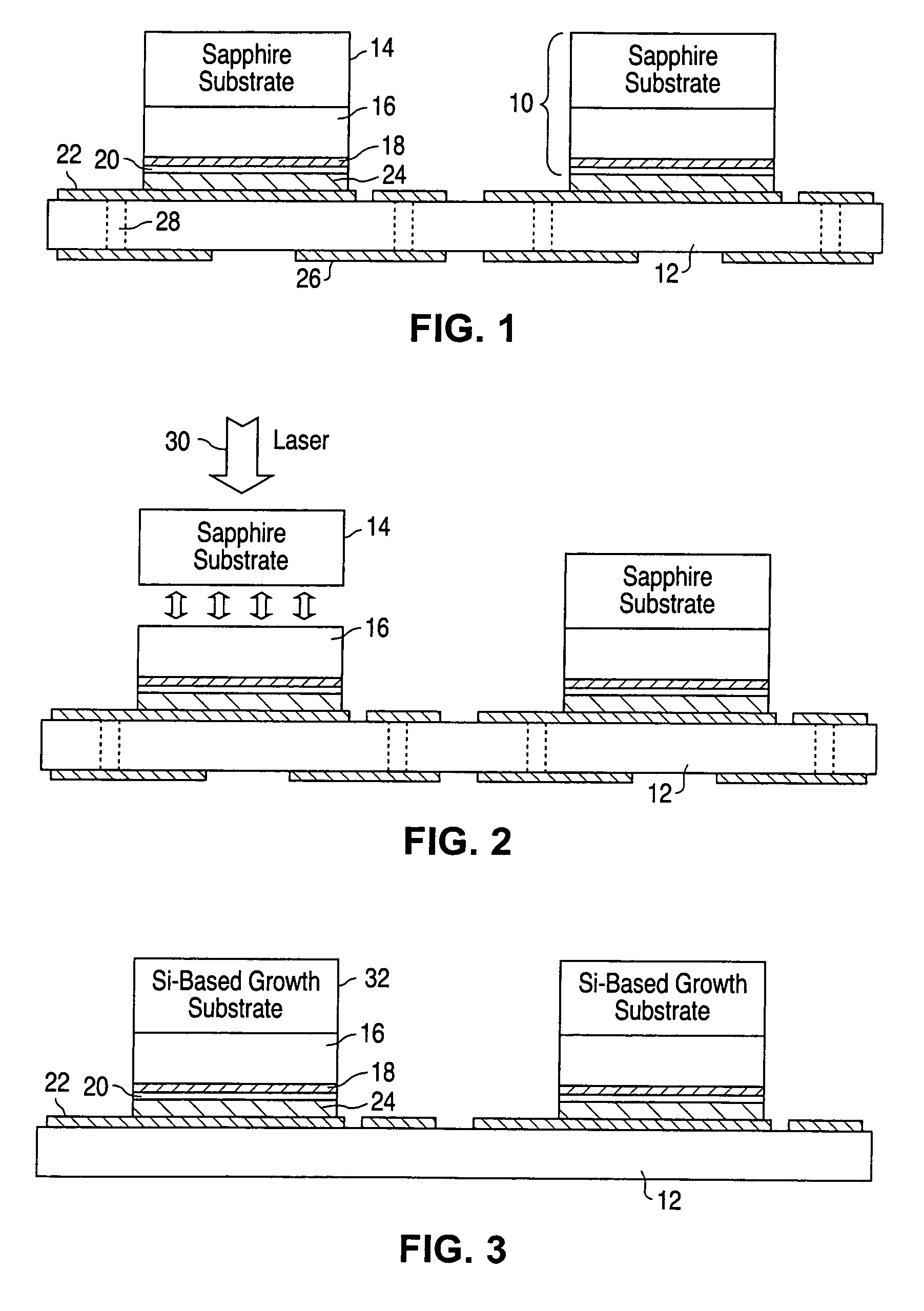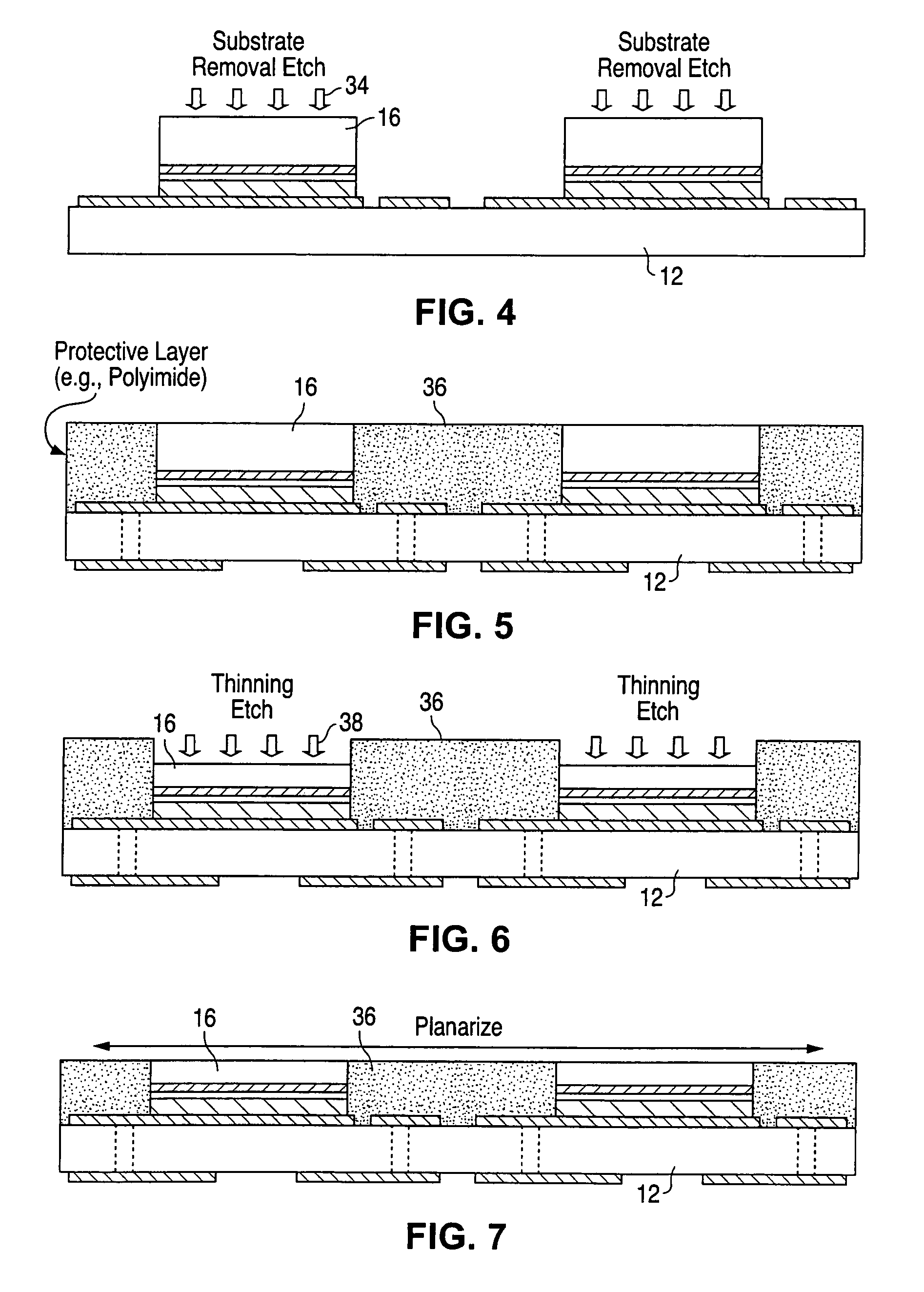Package-integrated thin film LED
- Summary
- Abstract
- Description
- Claims
- Application Information
AI Technical Summary
Benefits of technology
Problems solved by technology
Method used
Image
Examples
Embodiment Construction
[0035]A process for providing a very thin LED on a package substrate, without any growth substrate or support substrate, is described with respect to FIGS. 1–16.
[0036]As a preliminary matter, a conventional LED is formed on a growth substrate. In the example used, the LED is a GaN-based LED, such as an AlInGaN LED. The term GaN will be used to represent any GaN-based material. Typically, a relatively thick (approx. 1–2 micron) undoped or n-type GaN layer is grown on a sapphire growth substrate using conventional techniques. Other substrates may also be used, such as SiC, Si, SiCOI, and ZnO. In the case of gallium-phosphide (III-P) LEDs, the growth substrate is typically GaAs or Ge. The relatively thick GaN layer typically includes a low temperature nucleation layer and one or more additional layers so as to provide a low-defect lattice structure for the n-type cladding layer and active layer.
[0037]One or more n-type cladding layers are then formed over the thick n-type layer, follow...
PUM
 Login to View More
Login to View More Abstract
Description
Claims
Application Information
 Login to View More
Login to View More - R&D
- Intellectual Property
- Life Sciences
- Materials
- Tech Scout
- Unparalleled Data Quality
- Higher Quality Content
- 60% Fewer Hallucinations
Browse by: Latest US Patents, China's latest patents, Technical Efficacy Thesaurus, Application Domain, Technology Topic, Popular Technical Reports.
© 2025 PatSnap. All rights reserved.Legal|Privacy policy|Modern Slavery Act Transparency Statement|Sitemap|About US| Contact US: help@patsnap.com



